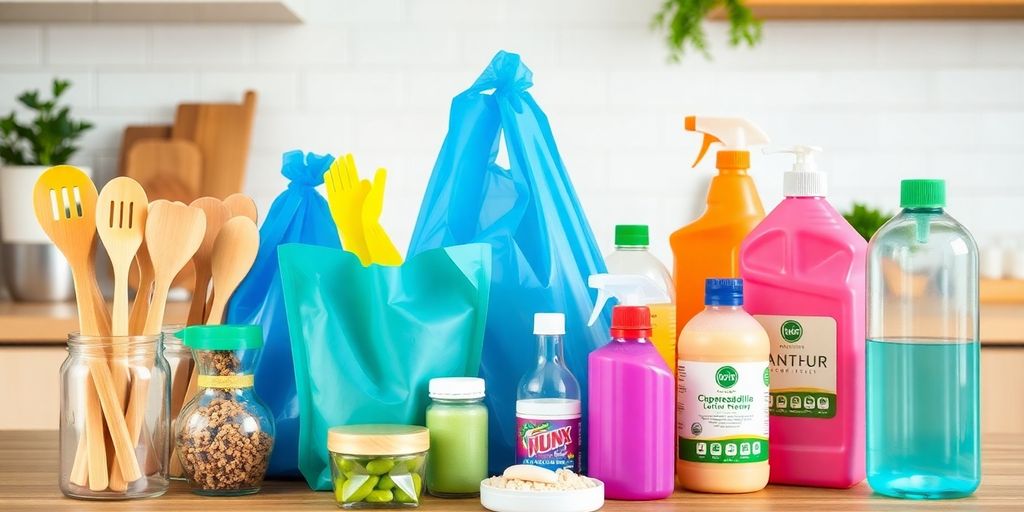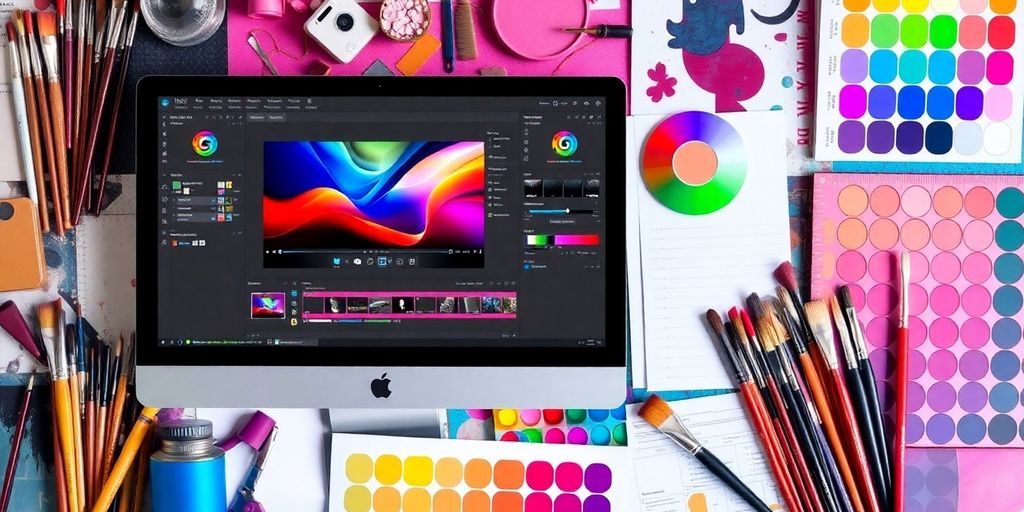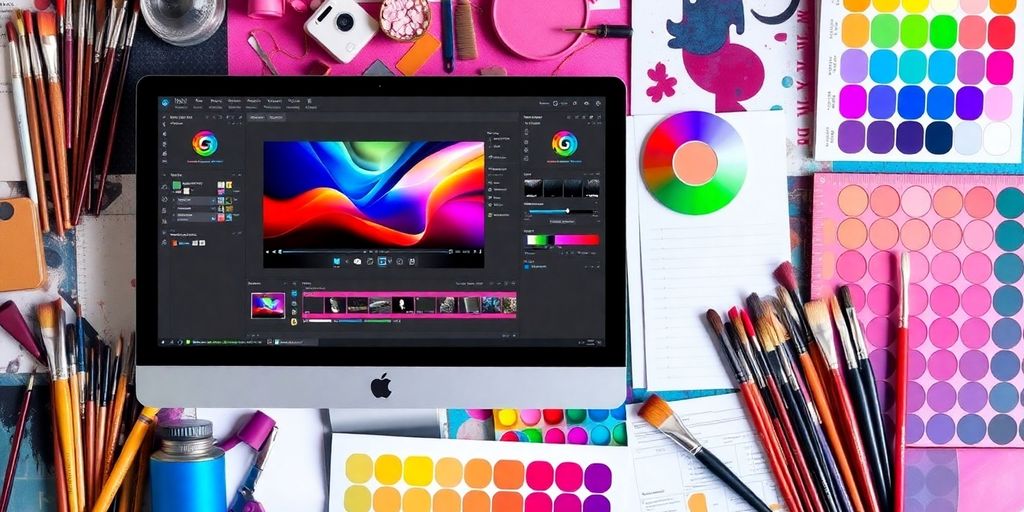Bottled Water Alternatives: Staying Hydrated Sustainably
Staying hydrated is super important, but we often forget how our choices impact the planet. Bottled water is convenient, sure, but it comes with a hefty environmental price tag. Luckily, there are plenty of alternatives that can help us quench our thirst without harming the Earth. In this article, we’re diving into some of the best bottled water alternatives: staying hydrated sustainably is not just a trend, it’s a necessity for our health and our planet.
Key Takeaways
- Bottled water contributes significantly to plastic waste and carbon emissions.
- Reusable water bottles and purification systems are cost-effective and eco-friendly.
- Glass and plant-based bottles are sustainable options for hydration.
- Hydration stations in public and workplaces help reduce single-use plastic.
- Innovative solutions like edible water pods are on the rise, showcasing future possibilities.
The True Environmental Impact Of Bottled Water
It’s easy to grab a bottle of water from the store, but have you ever stopped to think about what that convenience really costs the planet? The impact is bigger than most people realize, and it’s time we took a closer look. It’s not just about the plastic, though that’s a huge part of it. It’s about the whole process, from start to finish, and the resources it eats up along the way.
Understanding Plastic Waste
The sheer volume of plastic waste generated by bottled water is staggering. Think about it: millions of bottles are consumed every single hour. Most of these end up in landfills, where they take hundreds of years to decompose. And even when they do break down, they often leave behind microplastics that can contaminate our soil and water. Recycling helps, but it’s not a perfect solution, and a lot of bottles still end up as waste. It’s a problem that’s only getting bigger, and we need to find better ways to deal with it. The amount of single-use plastic bottles is a major concern.
Carbon Footprint Concerns
It’s not just the plastic itself; the entire lifecycle of bottled water contributes to a significant carbon footprint. Manufacturing the bottles, filling them with water, transporting them to stores, and then dealing with the waste all require energy. This energy often comes from fossil fuels, which release greenhouse gases into the atmosphere. The cumulative effect of all this is a substantial contribution to climate change. It’s a complex issue, but it’s clear that bottled water has a much larger carbon footprint than many people realize. The transportation of bottled water adds to the carbon footprint.
Water Resource Depletion
Another often-overlooked aspect of bottled water’s environmental impact is the strain it puts on our water resources. Many bottling companies extract water from aquifers and other sources, sometimes in areas already facing water scarcity. This can deplete local water supplies, harm ecosystems, and even lead to conflicts over water rights. It’s a reminder that water is a precious resource, and we need to use it wisely. Bottled water production can lead to water resource depletion.
The bottled water industry often touts its product as being cleaner or safer than tap water, but the truth is that tap water is often just as good, if not better. Plus, tap water is much more affordable and doesn’t come with the same environmental baggage. It’s time to rethink our reliance on bottled water and embrace more sustainable alternatives.
Exploring Eco-Friendly Drinking Water Alternatives
It’s easy to grab a bottle of water from the store, but what are the alternatives? Turns out, there are quite a few ways to stay hydrated without contributing to plastic waste. Let’s explore some options that are kinder to the planet.
Glass Bottles For Sustainability
Glass bottles are a great option. They’re reusable, easy to clean, and don’t leach harmful chemicals into your water. Plus, they just feel a bit more luxurious than plastic. The downside? They can be heavy and breakable, so maybe not the best choice for the gym, but great for home or the office. You can even find glass bottles with silicone sleeves for added protection.
Plant-Based Water Bottles
These bottles are made from materials like PLA, derived from cornstarch or sugarcane. The idea is that they’re biodegradable, which sounds amazing, right? However, it’s important to know that they usually require industrial composting facilities to break down properly. So, while they’re a step up from traditional plastic, it’s important to check if your local area has the infrastructure to handle them. Otherwise, they might just end up in a landfill anyway. It’s still a developing field, but the potential is there for rare metal extraction to be reduced.
Boxed Water Options
Boxed water is another alternative that’s gaining popularity. It comes in a carton made from paper, which is a renewable resource. The cartons are often recyclable, but again, check your local recycling guidelines. The water inside is usually purified, so you’re getting clean drinking water in a more sustainable package. Plus, the boxes are easy to store and transport. It’s a simple switch that can make a difference.
Switching to eco-friendly water options can seem daunting, but even small changes can have a big impact. Consider the lifespan of your water container and how it will eventually be disposed of. Every little bit helps in reducing our environmental footprint.
The Benefits Of Reusable Water Bottles
Material Choices For Reusability
When you’re thinking about getting a reusable water bottle, the material it’s made from is a big deal. You’ve got options like stainless steel, which is super durable and doesn’t leach chemicals, or glass, which is nice because it’s easy to clean and you can see what’s inside. Then there’s BPA-free plastic, which is lightweight, and silicone, which is flexible and great for travel. Each material has its own perks, so it really depends on what you’re looking for in a bottle. For example, if you’re clumsy like me, maybe skip the glass! Think about what you need in terms of durability, weight, and how easy it is to clean when choosing the right reusable bottle.
Cost-Effectiveness Over Time
Okay, so buying a reusable water bottle might seem like an unnecessary expense at first, but hear me out. Think about how much you spend on bottled water each week. It adds up fast, right? A good reusable bottle can save you a ton of money in the long run. Plus, you’re not just saving money; you’re also cutting down on plastic waste, which is a win-win. Here’s a quick look at how the costs can stack up:
| Item | Cost | Frequency | Yearly Cost | Notes |
|---|---|---|---|---|
| Bottled Water | $1.50 | Daily | $547.50 | Assuming one bottle per day |
| Reusable Water Bottle | $20 (initial) | Once | $20 | High-quality, durable bottle |
| Tap Water | Negligible | Daily | $0 | Assuming access to free tap water |
Switching to a reusable bottle is a small change that can make a big difference to your wallet and the planet. It’s one of those simple swaps that just makes sense.
Convenience And Portability
Let’s be real, lugging around a bunch of plastic water bottles is a pain. Reusable bottles are way more convenient. You fill it up once, and you’re good to go for a while. Plus, they come in all sorts of sizes and designs, so you can find one that fits perfectly in your bag or cup holder. And with more and more public refill stations popping up, it’s easier than ever to stay hydrated on the go. Here are some reasons why they’re so convenient:
- Easy to carry around.
- Refillable at most water fountains.
- Available in various sizes and styles.
Utilizing Water Filters And Purification Systems
Switching to water filters and purification systems is a smart move for both your wallet and the planet. I remember when I first got a filter pitcher – the tap water in my apartment tasted like chlorine, and it made a huge difference. Plus, it cut down on all those plastic bottles I was buying. It’s a win-win.
Improving Tap Water Quality
Let’s face it, tap water isn’t always the tastiest or cleanest. Water filters can significantly improve the quality of your tap water by removing impurities like chlorine, sediment, and even lead. I was surprised to learn about all the stuff that can be lurking in our water supply. Using a filter gives you peace of mind, knowing you’re drinking cleaner water. You can even test your tap water to see what contaminants are present.
Types Of Water Filters
There are so many different types of water filters out there, it can be a bit overwhelming. Here’s a quick rundown:
- Filter pitchers: These are affordable and easy to use. You just fill the pitcher, and the filter removes impurities as you pour. I started with one of these.
- Faucet filters: These attach directly to your faucet and provide filtered water on demand. They’re a step up from pitchers in terms of convenience.
- Under-sink filters: These are installed under your sink and connect to a separate faucet. They offer a higher level of filtration and a larger capacity.
- Whole-house filters: These filter all the water that enters your home. They’re the most expensive option, but they provide the best protection.
Choosing the right filter depends on your needs and budget. Consider what contaminants you want to remove and how much water you use. Also, don’t forget to replace the filters regularly to maintain their effectiveness.
Long-Term Cost Savings
Okay, let’s talk money. Buying bottled water all the time adds up fast. Investing in a water filter might seem like a big expense upfront, but it saves you money in the long run. Think about it: no more cases of bottled water taking up space in your pantry. Plus, you’re not contributing to plastic waste. It’s a smart financial decision that also benefits the environment. I did the math once, and I was shocked at how much I was spending on bottled water each month. Switching to a filter was a no-brainer.
The Role Of Hydration Stations
Public Refill Stations
Okay, so you’re out and about, trying to ditch the bottled water habit. What’s a thirsty person to do? That’s where public refill stations come in! You’ve probably seen them popping up more and more – at airports, parks, even along city streets. These are basically water fountains, but designed for refilling your reusable bottle. It’s a simple idea, but it makes a huge difference. Instead of buying another plastic bottle, you just top up what you already have. Plus, many of these stations have filters, so you’re getting good quality water. It’s a win-win!
Workplace Hydration Solutions
Let’s be real, most of us spend a big chunk of our lives at work. And staying hydrated there is just as important as anywhere else. Forget the old-school water cooler with those flimsy paper cups. Nowadays, companies are starting to invest in better hydration solutions. We’re talking about bottleless water coolers that hook directly into the water line, providing filtered water on demand. Some even offer sparkling water! It’s not just about being fancy; it’s about encouraging employees to drink more water and cut down on sugary drinks. Happy, hydrated employees are productive employees, right?
Environmental Benefits
Okay, let’s get down to the nitty-gritty: why are hydration stations actually good for the planet? Well, the big one is reducing plastic waste. Every time someone refills their bottle instead of buying a new one, that’s one less bottle ending up in a landfill or, even worse, the ocean. It adds up fast! Plus, think about the energy and resources it takes to produce, transport, and dispose of all those plastic bottles. Hydration stations cut down on all of that. It’s a small change, but it can have a massive impact over time.
Switching to hydration stations is a simple way to reduce your carbon footprint. By using refillable water sources, you’re actively participating in a more sustainable lifestyle and helping to protect our planet’s resources for future generations.
Innovative Water Solutions For The Future
Edible Water Pods
Okay, so hear me out: edible water pods. It sounds like something straight out of a sci-fi movie, right? But it’s actually a pretty cool idea that’s gaining traction. Basically, they’re little spheres of water encased in an edible membrane, usually made from seaweed extract. The idea is that you can just pop the whole thing in your mouth, drink the water, and then biodegrade the membrane naturally. This eliminates the need for any plastic waste whatsoever. It’s still in the early stages, and there are questions about how practical they are for everyday use, but the potential is definitely there.
Biodegradable Bottles
We’ve all seen the plastic bottles piling up, and it’s not a pretty sight. That’s why there’s a lot of research going into biodegradable bottles. These bottles are made from materials that can break down naturally over time, reducing the amount of plastic that ends up in landfills and oceans. Some are made from plant-based materials, like corn starch or sugarcane. The challenge is making them durable enough to hold water without leaking, and ensuring they break down properly in a reasonable timeframe. It’s a work in progress, but it’s a step in the right direction.
Smart Water Dispensers
Smart water dispensers are becoming more common in homes and offices. These aren’t your grandma’s water coolers. They often come with features like built-in filtration systems, temperature controls, and even apps that track your water intake. Some can even connect to your local water supply, so you don’t have to worry about refilling bottles or jugs. The goal is to make it easier and more convenient to drink clean water, while also reducing waste.
I think the coolest thing about these innovations is that they’re not just about solving a problem, they’re about rethinking how we interact with water altogether. It’s about finding ways to make hydration more sustainable, more convenient, and even more fun. And that’s something we can all get behind.
Key Benefits Of Sustainable Water Practices
Reducing Carbon Emissions
Switching to sustainable water practices can significantly lower your carbon footprint. The production and transportation of bottled water contribute heavily to carbon emissions, impacting everything from sea levels to weather patterns. Choosing alternatives like reusable bottles and filtration systems helps reduce these emissions. It’s a small change that makes a big difference.
Promoting Healthier Choices
Sustainable water options often lead to healthier choices. For example, using a bottleless water dispenser encourages more frequent hydration with cleaner water, free from the potential chemicals found in some plastics. Plus, you’re more likely to drink water when it’s easily accessible and tastes good. It’s a win-win for your health and the environment.
Supporting Local Water Sources
Opting for sustainable water practices can help support and protect local water sources. By reducing our reliance on bottled water, we decrease the demand for water extraction and transportation, which can strain local ecosystems. Using tap water with a good filtration system ensures you’re drinking safe water while also supporting the responsible management of our shared water resources.
Making the switch to eco-friendly drinking water options is more crucial than ever before. It’s not just about reducing waste; it’s about investing in a healthier future for ourselves and the planet. By choosing sustainable practices, we can ensure access to clean, safe water for generations to come.
Here are some ways to support local water sources:
- Reduce overall water consumption.
- Support local initiatives for water conservation.
- Advocate for responsible water management policies.
Wrapping It Up: Choose Wisely for a Greener Future
In the end, making the switch from bottled water to more sustainable options is a smart move for both you and the planet. Whether it’s using a reusable bottle, tapping into refill stations, or investing in a water filter, every little change helps. Not only do these alternatives cut down on plastic waste, but they also save you money in the long run. Plus, you get to enjoy fresh water without the guilt of harming the environment. So, as you think about your hydration habits, remember that there are plenty of eco-friendly choices out there. Let’s raise our glasses—filled with clean, sustainable water—and toast to a healthier future!
Frequently Asked Questions
What are the main environmental issues with bottled water?
Bottled water creates a lot of plastic waste, uses energy to produce and transport, and can lead to overusing local water sources.
What are some eco-friendly alternatives to bottled water?
You can use glass bottles, plant-based bottles, or boxed water, which are all better for the environment.
Why should I use a reusable water bottle?
Reusable water bottles save money, reduce waste, and are convenient to carry around.
How can I improve the quality of my tap water?
You can use water filters to remove impurities and make tap water taste better.
What are hydration stations?
Hydration stations are public places where you can refill your water bottle for free, helping to reduce single-use plastic.
What are some future innovations for drinking water?
Some exciting ideas include edible water pods and biodegradable bottles that are better for the planet.





Responses